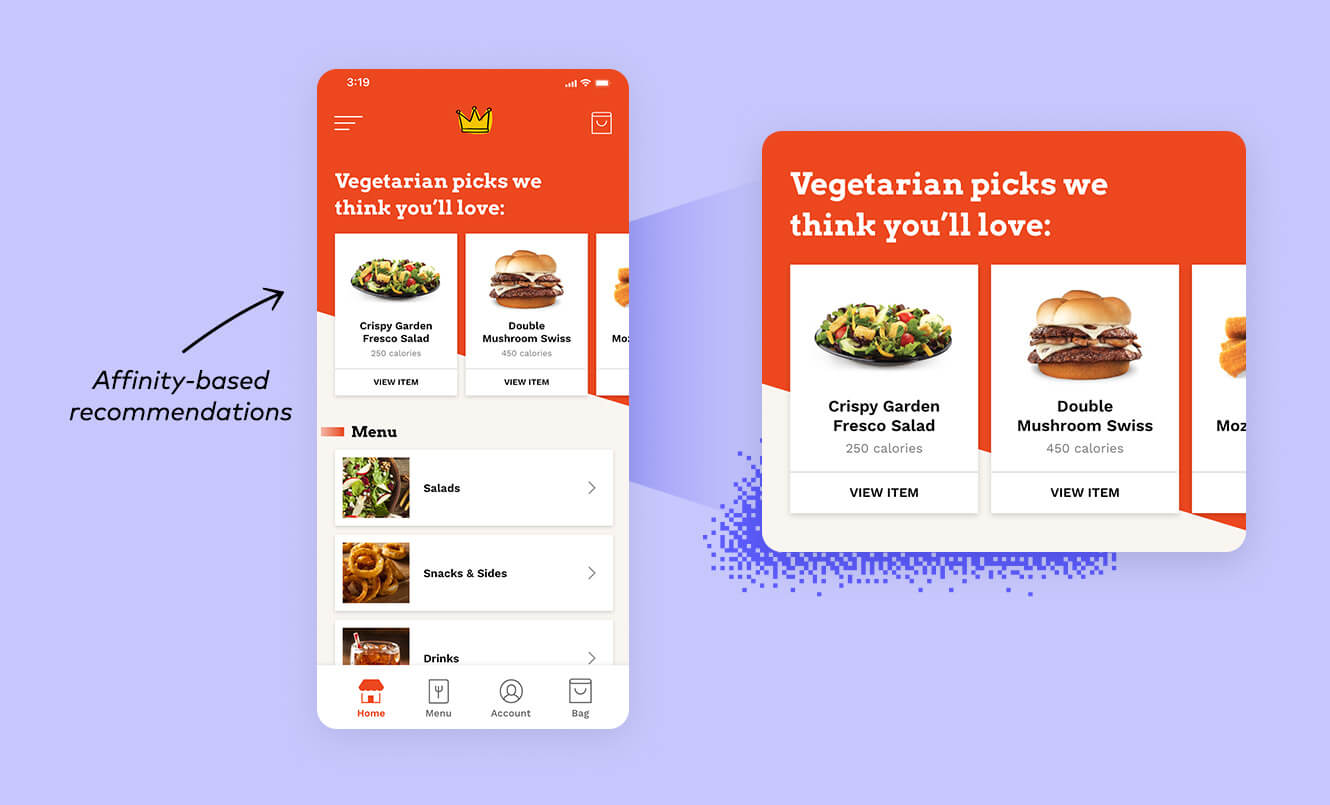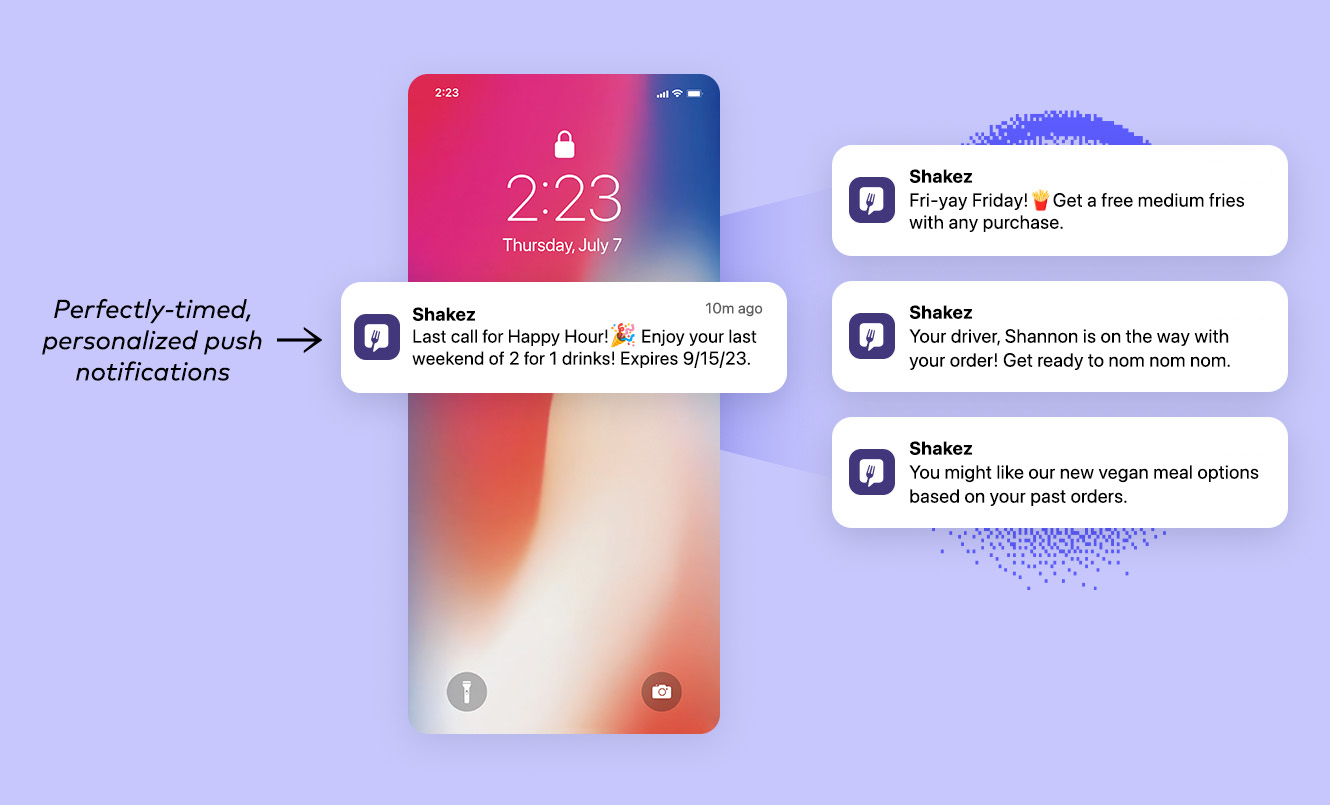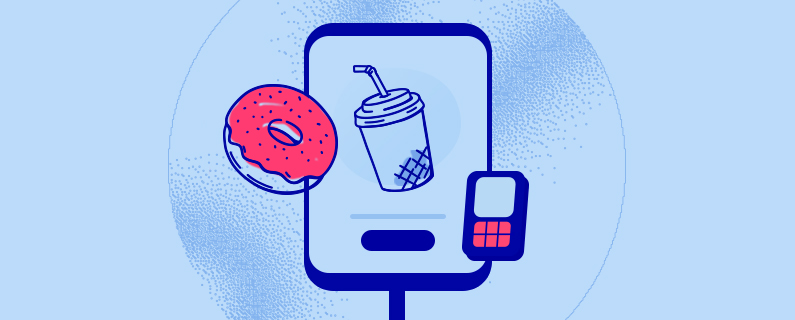Personalizing QSR Mobile Apps: A Distinctive Growth Opportunity
How QSRs can capitalize on their most promising channel with cutting-edge personalization.
Summarize this articleHere’s what you need to know:
- Personalizing the mobile app experience can significantly boost revenue and customer loyalty for QSRs.
- Key personalization strategies include tailored product recommendations, dynamic menus, and personalized push notifications.
- Product recommendations can be driven by purchase history, loyalty program data, and dietary preferences.
- Dynamic menus cater to different user types, like pickup vs. delivery or known vs. new customers.
- Personalized push notifications can nudge customers to reorder, encourage loyalty program sign-ups, and deliver exclusive offers.
- Personalization can also optimize order fulfillment workflows, improving operational efficiency.
- By personalizing their mobile app experiences, QSRs can create a more convenient and enjoyable experience for customers, ultimately driving revenue and loyalty.
Mobile ordering became table stakes for fast casual restaurants during the pandemic, providing greater convenience while also increasing operational efficiency. And adoption on the part of both businesses and consumers continues to grow, with 52% of quick-service sales expected to be driven by digital by 2025.
Coupled with the fact that many mobile app users are loyal members who have willingly provided some personal information, and most (if not all) are at least known customers with an attached purchase history, the channel presents a special opportunity for QSRs to greatly improve experiences for some of their most engaged customers through personalization.
In this article, we’ll take a deeper look at some of those unique opportunities for mobile app personalization and how QSRs can capitalize on them to not only significantly increase conversion rates, average check size, and incremental revenue but also foster greater loyalty.
Specialized opportunities for mobile app personalization
From the moment a user opens the app until an order is placed, delivered, or picked up, QSRs can individualize each step of the process in a few major ways through:
- Tailored Product Recommendations
- Dynamic Menus
- Personalized Push Notifications
Now let’s explore each area further.
Tailored Product Recommendations
Product recommendations are one of the best tools to reduce exit rates, drive discovery, and increase monetization for every app user. These campaigns can be embedded across the entire order flow and in various locations on the mobile app, including:
- On the home screen of the app, promoting personalized products
- On a post-add-to-cart modal, highlighting complementary items
- On the pre-checkout cart page, suggesting “last minute” products
For registered users, recommendations can take into account all available activity, such as their cross-channel purchase history (i.e. drive-thru, web, and kiosk), loyalty program data, as well as any dietary restrictions or preferences captured through affinity profiling. The end result being recommendation campaigns that strategically highlight the last meal a customer has ordered, meals that qualify for a loyalty reward, or meals that fit their dietary preferences.
Contextual data such as restaurant location (either selected by the user or based on geodata), weather, product popularity, current inventory, and time of day can then be used to further augment these experiences. For example, QSRs can use it to highlight trending or limited-time items, remove out-of-stock or unavailable items, or showcase seasonal recommendations, like hot beverages on a cold day.

Recommendation campaigns don’t have to be limited to products, either. Since mobile apps are usually at the core of the QSR loyalty program, special offers and coupon experiences can be tailored to users as well. These can include store-level promotions or those personalized for loyal members to drive higher engagement and increase revenue.
Dynamic Menus
Serving a single, static menu is a thing of the past, especially given each restaurant has its own unique inventory, promotions, pricing, types of patrons, and more. This is why real-time menu personalization across selling channels, including mobile applications, is so important to QSRs.
On top of every individual guest having their own needs and preferences, here are a few other factors that necessitate different menu experiences:
- Pickup vs. delivery guests:If both delivery and pickup fulfillment options are available, each can have its own menu to reflect the different ordering parameters (i.e. no frozen goods for delivery), pricing, and so forth (on top of customer preferences).
- Different day-parts: There are different product catalogs and menus for different parts of the day: breakfast, lunch, and dinner, which can be accounted for with algorithms that feature a unique set of business rules for each to ensure the most accurate offers, messaging, and product recommendations are shown throughout the day.
- Known vs. unknown users: Experiences can be tailored to highlight menu items that are relevant to known users or remove those that are unfit according to their preferences or dietary restrictions. In practice, a vegetarian customer can automatically be served a menu without any meat options, or a parent may see kid’s meals prominently featured on display.
- Loyalty members vs. regular customers: A user not yet enrolled in a customer loyalty program may see a message to sign up or a special offer that would be unlocked by doing so, while an existing loyalty member may see a menu populated with point values to incentivize participation as well as other recommendations, content, and offers in line with their past purchase history and affinities.
The goal is to reduce friction throughout the ordering process and guest experience, which can be further streamlined for existing customers by implementing “Click & Collect” or “Or It Again” experiences. This would provide them with the option to quickly reorder their last order, with personalized recommendations supplemented to promote new products and increase check size.
Personalized Push Notifications
Mobile apps present QSRs with the added benefit of being a convenient, consistent channel to send notifications and proactively engage with customers in a way that is personalized and relevant to each individual’s unique situation.
Push notifications are especially helpful for QSRs looking to convert new mobile app users into loyalty program members. For example, content and messaging designed to promote loyalty program sign-ups can be both A/B tested to determine the best-performing variations overall as well as personalized to different segments based on data from the current session, previous interactions, and even historical transactions at the store (for both identified and unidentified customers), increasing the likelihood of conversion.
Notifications, either delivered in-app or via push, can also be used to deliver the following tailored messages for different customer-types:
- Reminders to order again
- Coupon expiration countdowns
- Loyalty tier status
- Exclusive offers or deals
- Referral incentives

Operational efficiencies, driven by personalization
Mobile app personalization can also improve QSR operations through the optimization of order fulfillment workflows. For example, pick-up order preparation can start when the customer gets close to the restaurant (based on mobile geo-location) vs. at the point of order confirmation. This eliminates situations where orders sit on the pick-up shelf for extended periods of time and ensures the highest quality and freshness of food for increased customer satisfaction.
Optimizing every experience
A/B testing is a powerful approach that can be seamlessly executed to ensure the most relevant campaigns are launched for a given audience or KPI, whether product recommendations, dynamic menus, or push notifications. Deep learning can also be used to predict the next best series of product recommendations, with the right QSR personalization platform able to train the models to understand and execute against specific nuances only found in the restaurant industry (e.g. take rate says less about business impact than check size).
The future of the app-driven QSR customer experience
Mobile apps represent a huge opportunity in QSR, as they provide data-rich, loyalty-deepening experiences that cannot be replicated in-store or via the drive-thru. Teams can gain a competitive advantage by delivering the tailored experiences consumers have come to expect across industries. Doing so through personalized product recommendations, dynamic menus, and push notifications will not only positively affect order fulfillment workflows and the larger customer experience, but also foster loyalty and increase key business KPIs.



